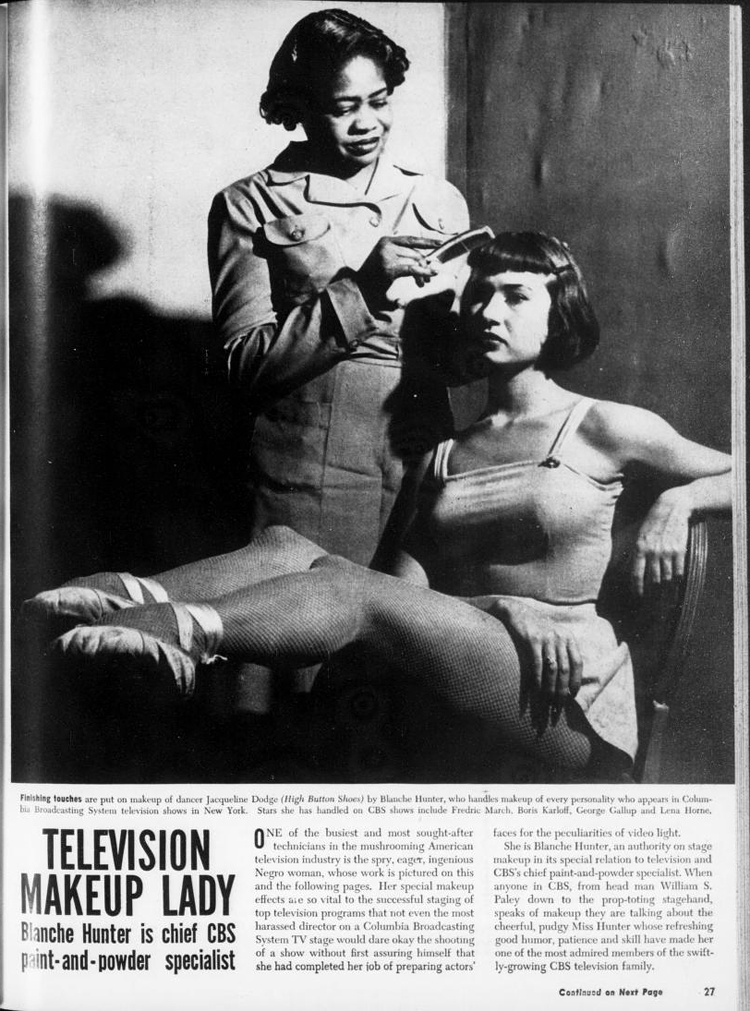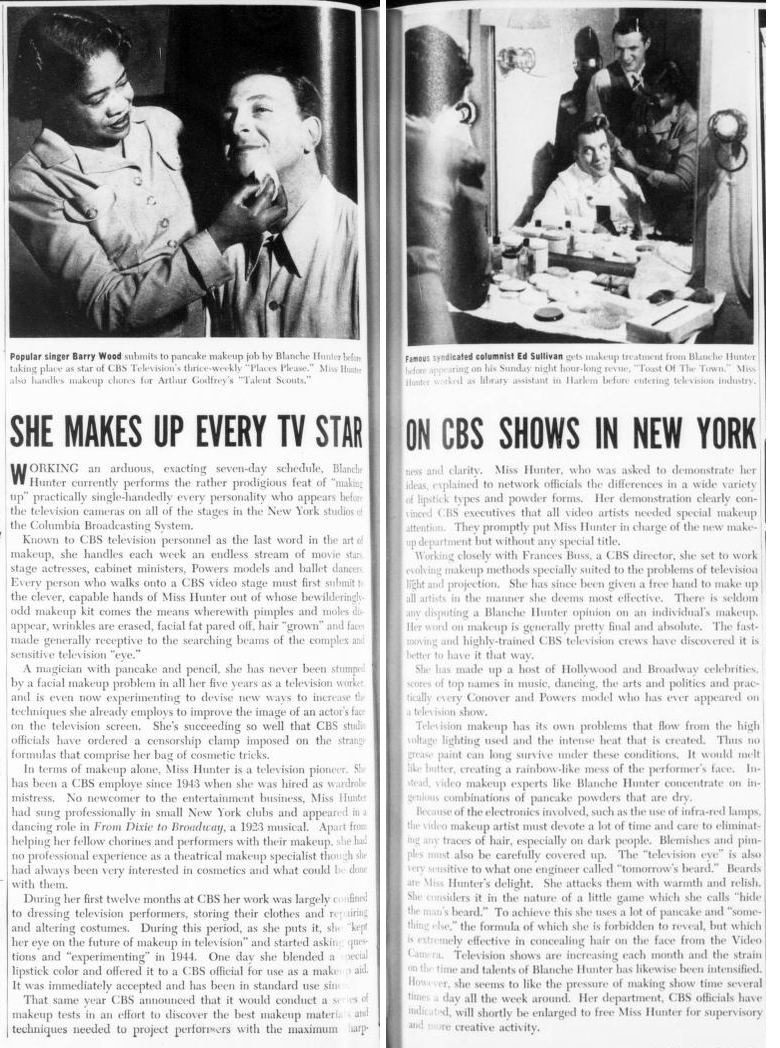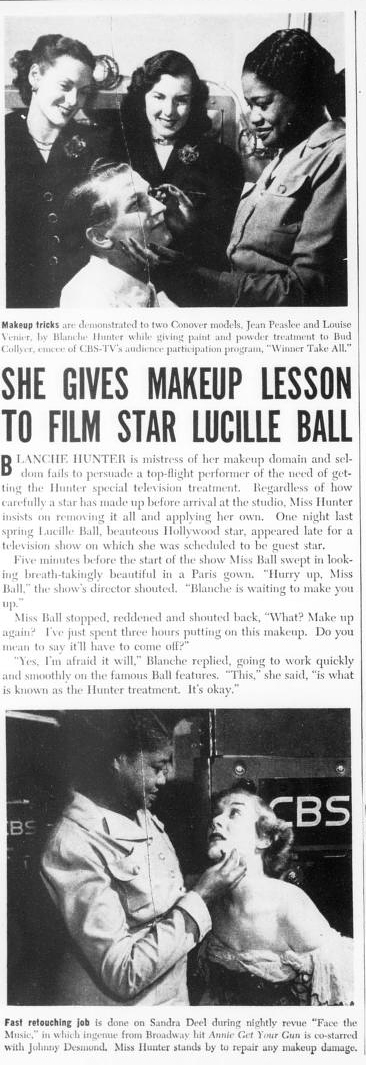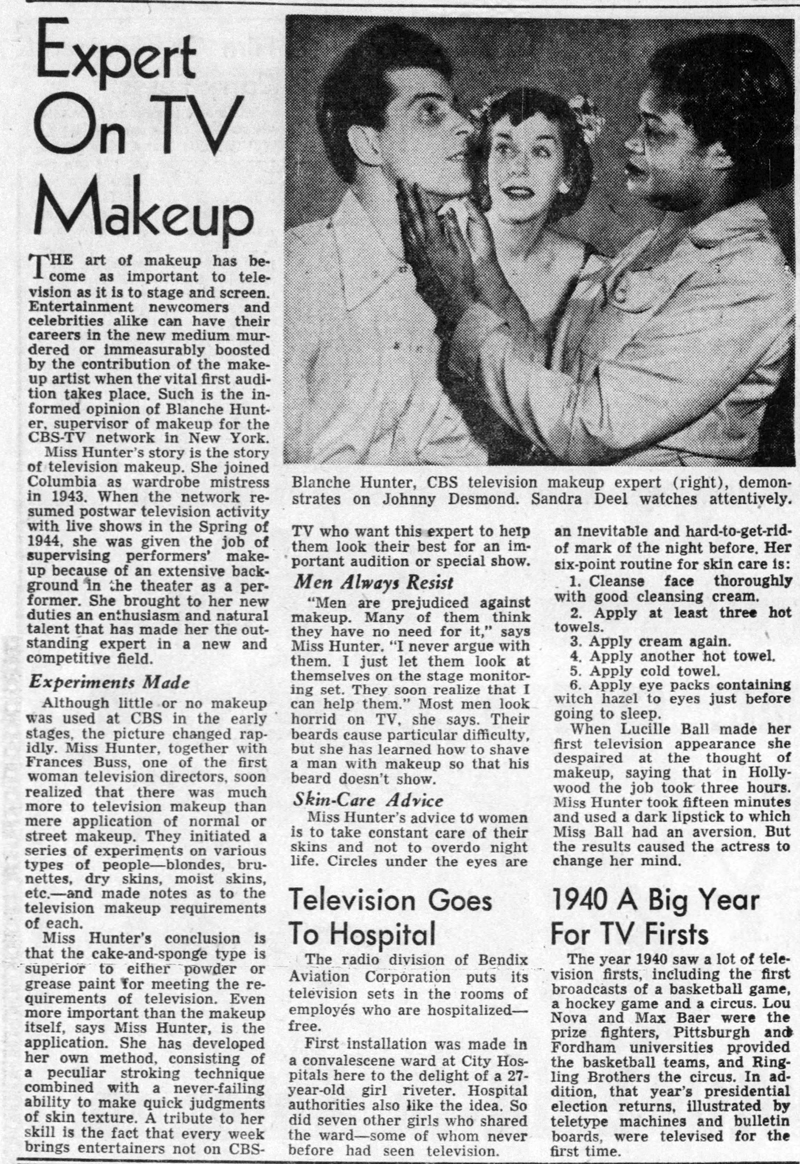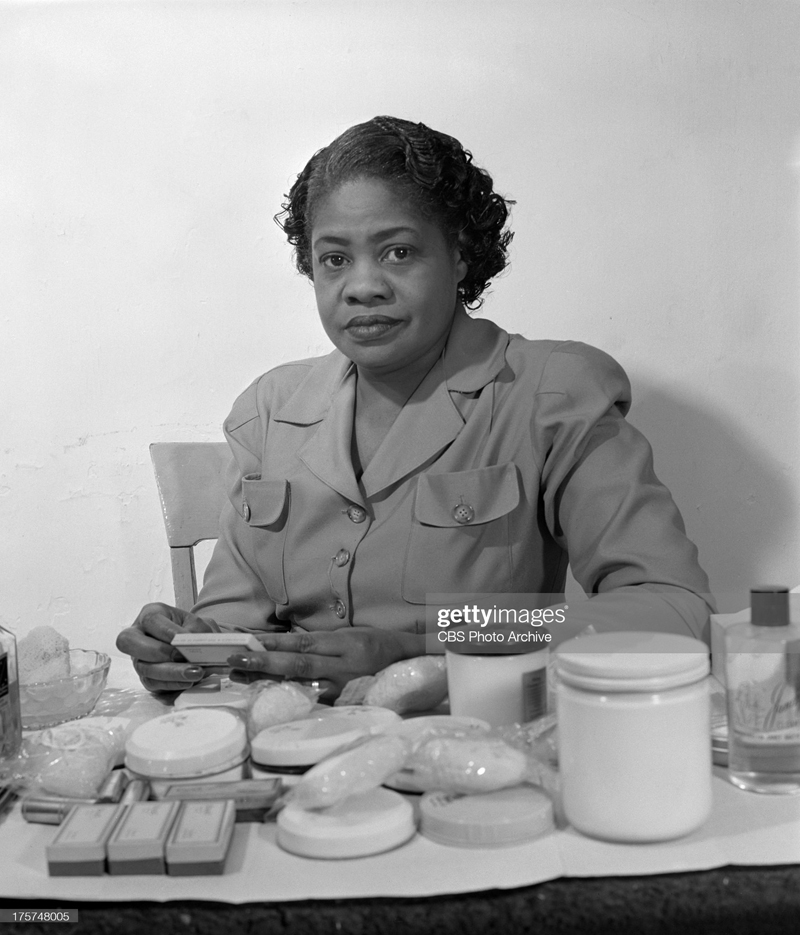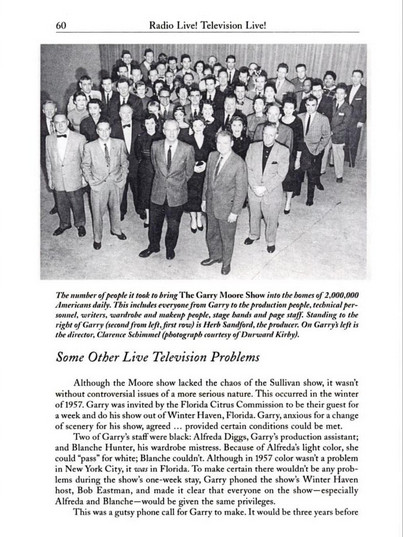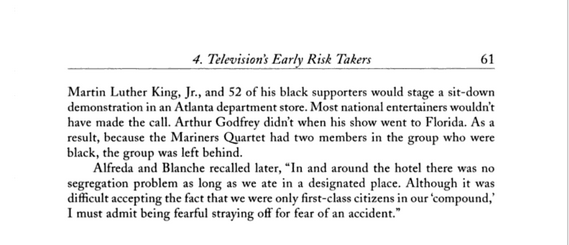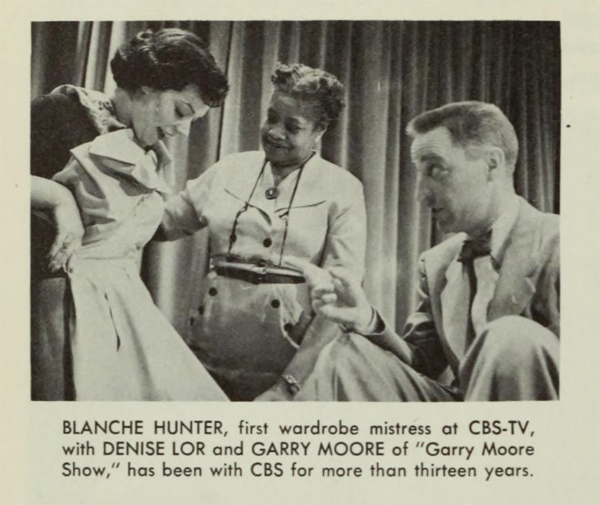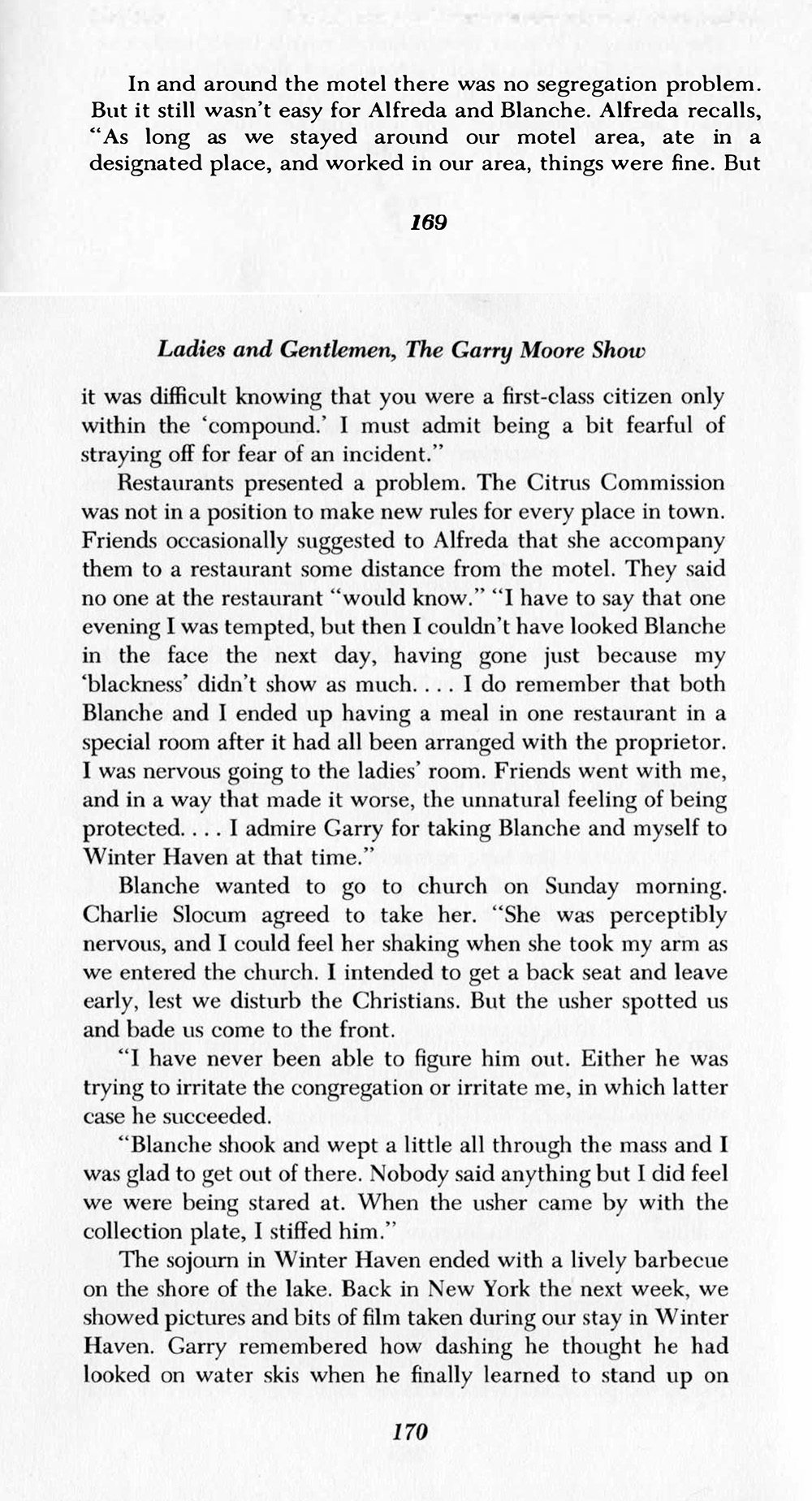It's impossible to tell how old she is in the Getty/CBS archive photos, but I'm guessing Hunter was born about 1905-1910. My assumption was that she was born and raised in New York City so looking at city-based databases and archives made the most sense. I started with the NY Genealogical Society. The research consultant there couldn't tell me much unless I could pay an unaffordable fee to an actual genealogist, but she did suggest some leads.
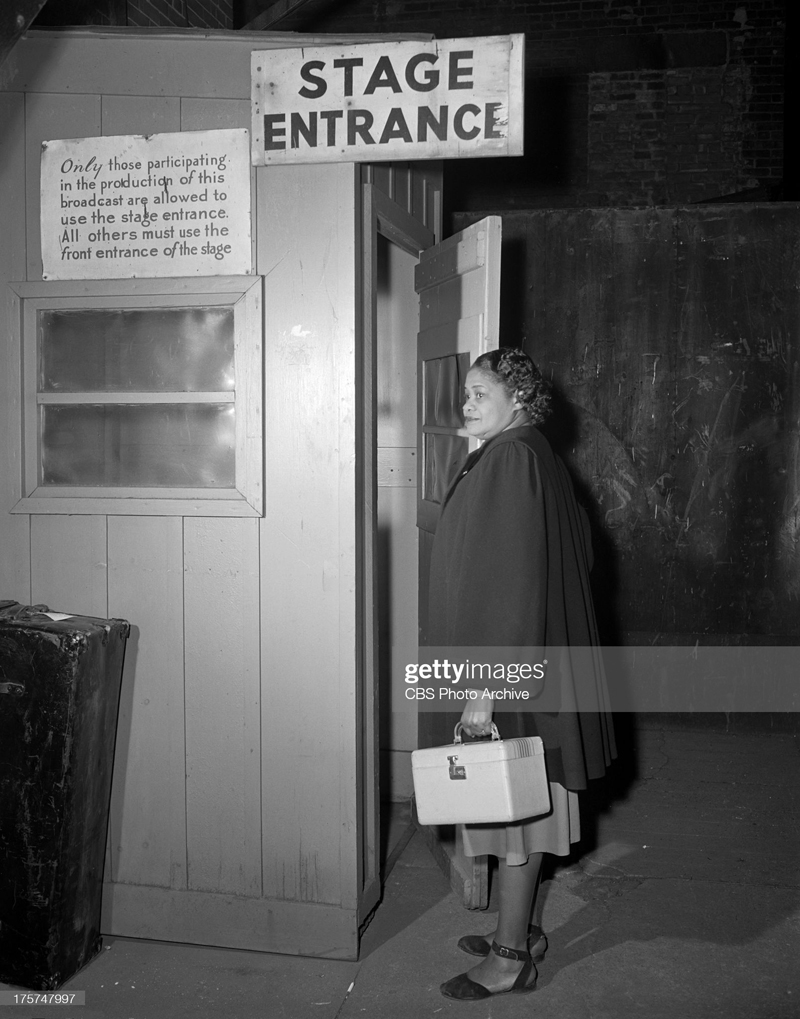 (images from gettyimages.co.uk)
(images from gettyimages.co.uk)
2. NYPL Schomberg Center – had some CBS clips, including the Bob Howard Show, but there were too many clips and would require paying their research fee. While it would have been interesting to see the clips, they didn't primarily focus on Hunter; we were looking more for interviews with her rather than clips of the TV shows she worked on.
4. Paley Center – no information
5. NY Historical Society and WBSS Media – no response
My only parting thought on Blanche Hunter is that she was amazingly talented. A Black woman working as the head makeup artist on a national TV network and garnering press in the late 1940s must have been highly unusual. As we know, Black women have to work twice as hard to get half as much, so for Hunter to succeed at such a high level during that era demonstrates truly outstanding ability. Unfortunately, like so many other Black luminaries, her story is not complete.
I'd like to give a big HUGE thanks to Professor Melissa for her excellent work on this. Given her research prowess, I'd be shocked if anyone else is able to obtain additional information for Ms. Hunter, but if you do, please send it my way!
Update, February 2023: Lo and behold, a smidge more information! I'm so grateful to game show historian Matt Ottinger, whose eagle eyes spotted Blanche during the 4th anniversary episode of I've Got A Secret, which aired on June 13, 1956. You can also see her waving goodbye at the end of the clip. The sign around her neck says Wardrobe, which sort of makes sense given that her official title during most of her time at CBS was wardrobe mistress, but I am curious to know who the mystery makeup man is. He sits down next to Blanche around the 2:57 mark.
There's a very good chance it's Bob Jiras1, who is credited for establishing the first formal makeup department at CBS and was appointed its director shortly after his arrival. A profile of Jiras from April 19502 discusses one of his first tasks for CBS, which was the tricky makeup for Dr. Jekyll and Mr. Hyde on the show Suspense. That particular episode aired in September 1949, so we can assume Jiras arrived at CBS well after Hunter. If that's true, it seems racism and sexism were at play: it's certainly possible CBS offered the job of makeup department head to Blanche which she turned down for whatever reason, but given the era, most likely it was the case that a major TV network would not allow a Black woman to be the head of makeup, even though she had been there some 6 years longer than a white man and had the exact same skill set and experience (if not greater). Granted, Jiras was a seasoned pro, having come from Hollywood and working with Dick Smith so he was especially good with special effects, but there doesn't seem to be any discernible reason Hunter couldn't have been in charge. Especially since, by all accounts, she was CBS's resident makeup expert at the time.
Anyway, Matt kindly scanned and sent me the pages from Ladies and Gentlemen, The Garry Moore Show: Behind the Scenes When TV Was New, the original source for the previously mentioned anecdotes about the trip to Florida and confirmed it did indeed take place in 1957.
He also pointed out that the book did not in fact make the claim that New York wasn't racist at the time but instead indicates that Florida was far more overt in terms of segregation. So between the I've Got A Secret episode and confirmation from the book, now we know Blanche was with the network at least until 1957. Thank you for these new findings, Matt! By the way, his current project is a very deep dive into the history of I've Got A Secret, which grew out of his incredibly extensive archive on Bill Cullen. It's all super fascinating, so go check it out!
1It's impossible to tell for sure from old newspaper photos, but there is a strong resemblance between images of Jiras in various newspaper articles and the footage from this episode – it could very well be the same man.
2 John Crosby, "Makeup for Video Actors Big Problem," The Oakland Tribune, April 21, 1950, 36. The article was re-printed with different headlines in several papers throughout the U.S.
